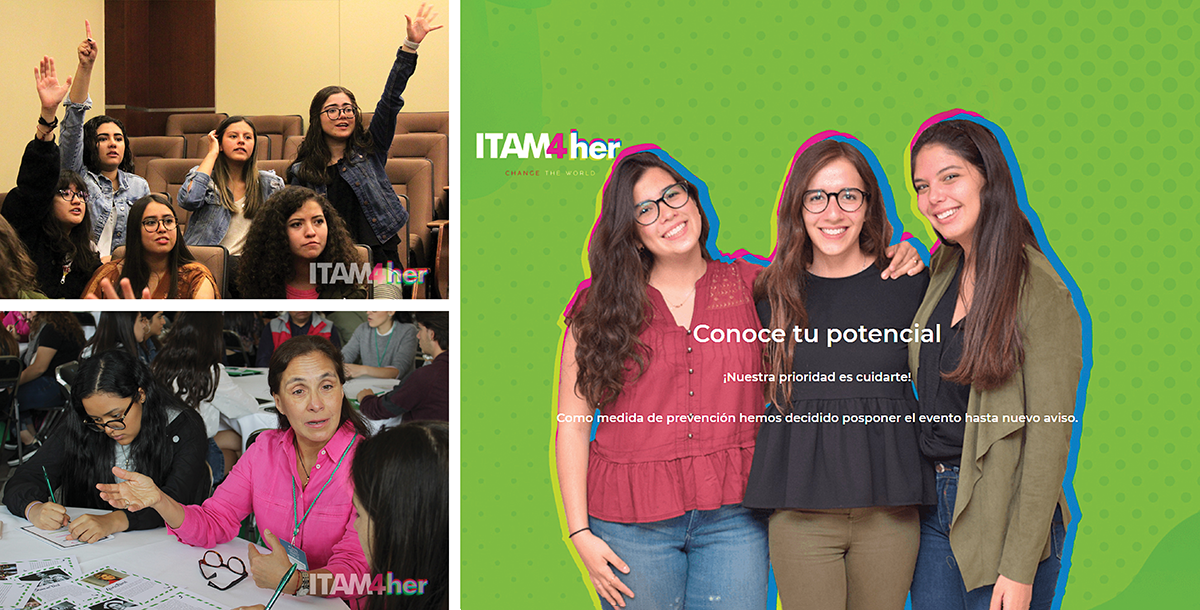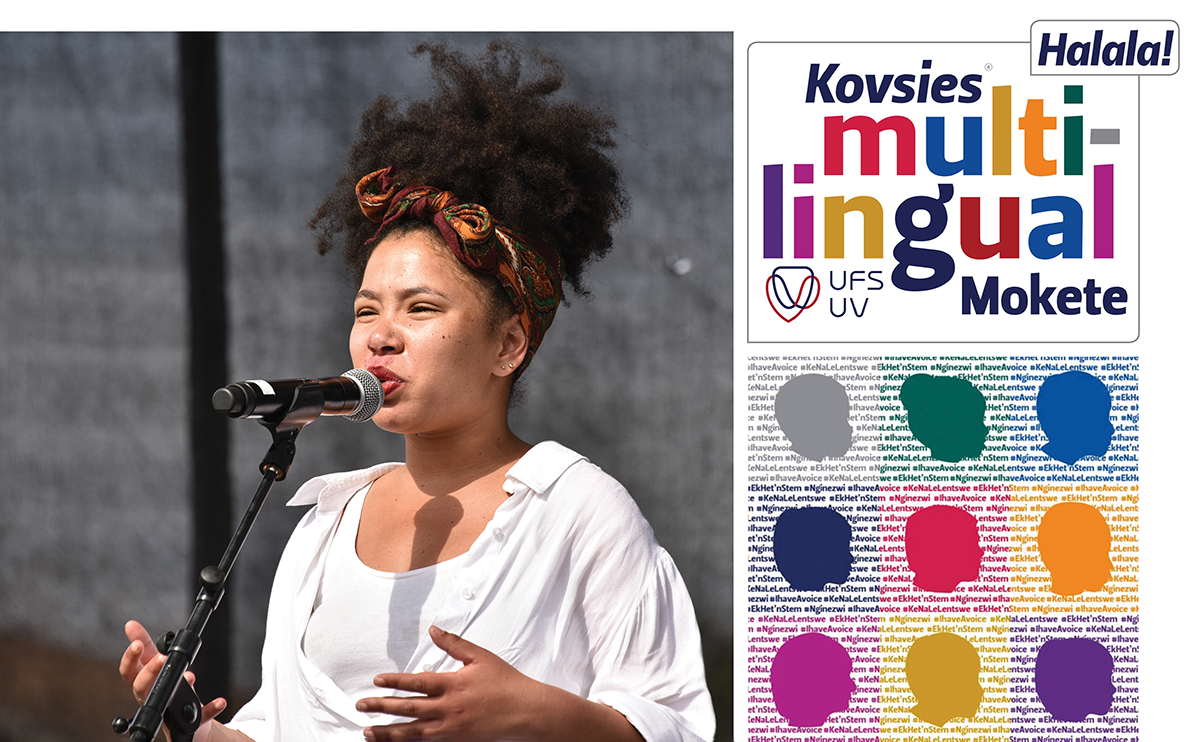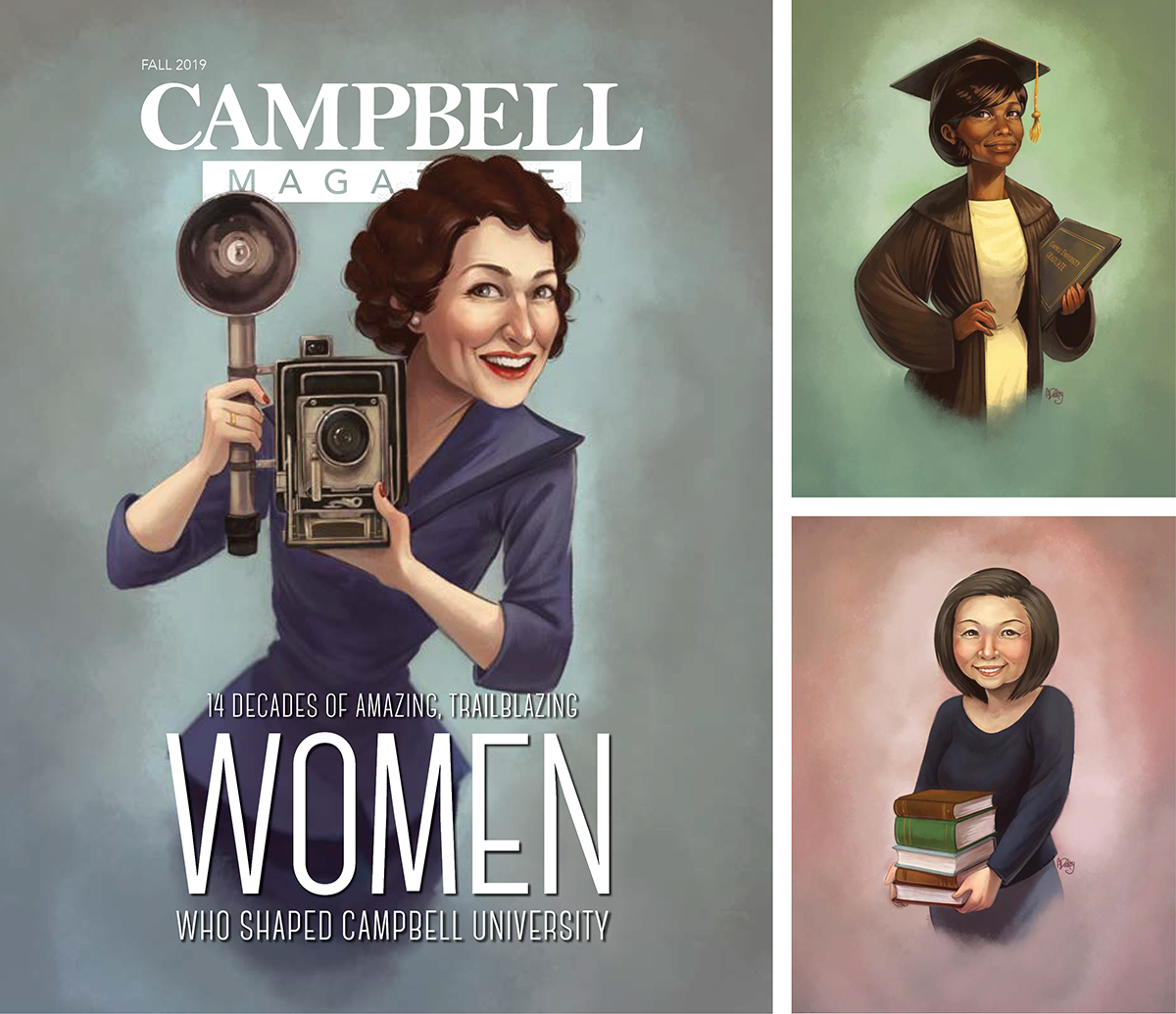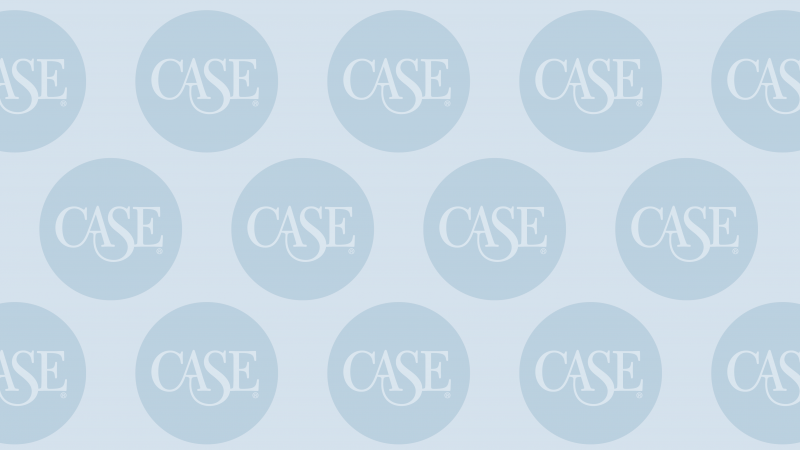Diversity, Equity, and Inclusion in Action

UNIVERSITY OF THE FREE STATE IN BLOEMFONTEIN, SOUTH AFRICA: The University’s first Kovsies Multilingual Mokete was a two-day festival that featured art exhibitions, a drumming circle, musical performances, poetry readings, drama productions, food vendors, and a concert by popular local bands—all presented in five languages (English, Afrikaans, Sesotho, Zulu, and sign language).
The terms diversity, equity, and inclusion have become ubiquitous on college and university campuses. Students, faculty, and staff agree that it’s important—even essential—to build diverse, equitable, and inclusive campus communities, but what does it take to make that happen?
“You have to start at the top with the presidency: Look at the leadership team around that president. [And] if that team doesn’t reflect those values of diversity and inclusion it’s difficult to make that play out at other levels,” says Debra Valentine-Gray, former director of regional advancement at Indiana University of Pennsylvania. She served as the judge coordinator for the Best Practices in Diversity, Equity, and Inclusion category of the CASE Platinum Awards, which honors programming, projects, and initiatives that engage diverse constituents and foster an organizational climate committed to diversity. The same is true for the leadership of departments or project teams.
And that’s one thing all of CASE’s 2020 diversity award winners had in common, says Valentine-Gray: They’ve each had a leader who didn’t just approve the initiative or the event, but also fully embraced the ideology of diversity, who is practicing it in their own work, and who is actively pushing the project forward.
“When leaders don’t practice what they preach, it can be almost impossible for diversity, equity, and inclusion goals to be met,” she explains.
A second important commonality between the award-winning teams is that they understand that diversity, equity, and inclusion need to be sustainable and systemic—more than one event or one magazine article.
“Diversity and inclusion require time, money in some cases, and an infrastructure or foundation to be in place to be fully supported—otherwise, it’s just pacification,” Valentine-Gray says.
Several of the institutions honored by the 2020 Circle of Excellence and Platinum Awards, across categories, are walking the walk when it comes to setting a foundation for diverse, equitable, and inclusive campuses. They have leaders who recognize and incorporate these ideals into their day-to-day work. They are creating events and initiatives that not only attract varied audiences, but also make individuals feel heard and welcomed once they arrive. They are lifting up minority voices and stories, bringing different cultures and groups together, and training their faculty and staff to become allies for their colleagues.

INSTITUTO TECNOLÓGICO AUTÓNOMO DE MÉXICO: The Instituto Tecnológico Autónomo de México created a program to invite young women to the STEM (science, technology, engineering, and math) party. The Women’s Initiative launched in 2019 and earned a Bronze Circle of Excellence Award in the Advancement Services: Engagement on a Shoestring category.
Closing the Gender Gap
One aspect of building a diverse campus is opening doors to minority groups in the first place. To do that, institutions need to first recognize that a representation discrepancy exists and then create programming or initiatives to address that discrepancy and move toward equity.
“At its core, diversity is simply being asked to attend the party—getting that invitation in the first place,” Valentine-Gray says.
The Instituto Tecnológico Autónomo de México is doing just that: recruiting a minority group to its campus. At the Mexico City institution, women make up about 40% of the student population, but only about 30% of the engineering students.
“We want to close this gap and get more girls and women interested in STEM and in our engineering programs,” says Alejandra Peralta, vice president of advancement and communications.
To do this, ITAM created a program to invite young women to the STEM (science, technology, engineering, and math) party. The Women’s Initiative launched in 2019 and earned a Bronze Circle of Excellence Award in the Advancement Services: Engagement on a Shoestring category.
Peralta and her team realized they needed to introduce the idea of STEM careers earlier in girls’ lives and to show them what it could look like to pursue an engineering major. So they decided to connect high school students with ITAM’s alumnae leaders in various fields at an on-campus event on April 5, 2019.
To make the event worthwhile for the university as well as the various attendees, the day was divided into multiple components: free activities for high school students including discussions with ITAM alumnae mentors, an exercise designed to help the students determine their passions and purpose in life, and a rally with academic and lifestyle challenges; a “Women: Talent and Development” seminar for alumni; and a networking session for alumni.
In total, the Women’s Initiative had nearly 600 participants: 231 high schoolers and 340 alumni.
“We heard from attendees that they were happy to be a part of our event and of our community,” Peralta says. “The alumni felt like they were participating in something significant and making a difference in young girls’ lives and the students were excited to have conversations with the mentors and hear about career options and paths that they hadn’t previously considered.”
Providing Inspiration and Support for First-Generation Students
Minority populations or underrepresented groups, once they’ve been invited to join a community, have to feel safe and comfortable in that space. Before recruiting these groups, institutions need to have the infrastructure in place to include and support them once they arrive.
It speaks to the difference between diversity and inclusion, explains Valentine-Gray: “If diversity is being asked to attend the party, inclusion is getting asked to dance once you’re there.”
Getting asked to dance also ensures that people don’t leave your party early, she says.
People leaving “is a recurring theme at institutions that don’t fully embrace the inclusion piece of diversity and inclusion,” Valentine-Gray says. The institutions have “done a lot of recruiting, but students leave after their first year or faculty leave as soon as their contracts are up because they never found their place, they didn’t feel welcome, [or] they didn’t feel included.”

NORTHWESTERN UNIVERSITY: The university’s office of student engagement worked with the Northwestern Alumni Association to create what it called affinity welcome cards.
Northwestern University in Evanston, Illinois, U.S., is keeping people at the party through building connections and sharing resources. Over the past 10 years, the number of first-generation and low-income students at Northwestern has doubled and the institution knows that this population often lacks access to networking and career resources. To combat this, and foster a sense of belonging, the office of student engagement worked with the Northwestern Alumni Association to create what it called affinity welcome cards. The project earned Northwestern a Grand Gold Circle of Excellence Award in the Diversity and Talent Management: Diversity Initiatives category.
The cards featured quotes from alumni, who identified as first-generation students or from lower-income backgrounds, offering words of advice and encouragement and reminding students that there are people and resources available to help them. The other side of the card listed those resources and gave information about NAA offerings and opportunities for students to connect with alumni, including mentorship, externships, and community building programs.
It “just felt like something that we should be doing for our community,” says Suresh Mudragada, senior associate director of student engagement and the architect of the cards. “And it’s easy to replicate for other student groups—in fact, we worked with campus partners to create cards for students of color, LGBT+ students, and international students.”
Though the welcome cards are a relatively simple concept, they are a meaningful way to engage alumni in an effort that has a lasting impact on the first-generation students who have received them. One alumna who wrote a message for the cards received a letter from a first-year student who appreciated the words of support. She wrote that whenever she doubted her place at Northwestern, she looked at that card. It buoyed her and became her personal mantra for perseverance.

UNIVERSITY OF THE FREE STATE IN BLOEMFONTEN, SOUTH AFRICA: For its two-day Kovsies Multilingual Mokete celebration, the university wanted to show “unity in diversity,” says Engela van Staden, vice-rector: academic.
Bringing Different Backgrounds Together
A truly diverse campus community should have opportunities to learn about and gain an understanding of underrepresented groups or cultures.
“Learning about other peoples’ cultures is one of the first signs of respect,” Valentine-Gray says. “And it also broadens you as an individual and makes you more accepting.”
The University of the Free State in Bloemfontein, South Africa, embraced this concept with its first Kovsies Multilingual Mokete in September 2019. The two-day festival featured art exhibitions, a drumming circle, musical performances, poetry readings, drama productions, food vendors, and a concert by popular local bands—all presented in five languages (English, Afrikaans, Sesotho, Zulu, and sign language). It earned UFS a Gold Circle of Excellence Award in the Diversity and Talent Management: Diversity Initiatives category.
As a country, South Africa recognizes 11 official languages. In the Free State region, where the main campus of UFS is located, 65% of the population speaks Sesotho, 13% speaks Afrikaans, and the remainder speak Xhosa, Tswana, Zulu, and English. In 2017, UFS adopted a language policy declaring English as the institution’s official language while establishing “a language-rich environment committed to multilingualism.”
“We know that language is linked to culture. It’s linked to your beliefs, how you think, how you eat, what you eat, how you dress,” explains Engela van Staden, vice-rector: academic. At the same time, she says, multilingualism promotes a sense of belonging and acceptance among people with different cultural and linguistic backgrounds. “We wanted to celebrate how we’ve come a long way in terms of embracing the different cultures of South Africa and becoming one UFS community. We wanted to show the world the unity in our diversity.”
In order to pull off a festival of this magnitude, van Staden and her team worked with staff in nearly every department across campus taking care to get input and buy-in every step of the way. Not only did the mokete celebrate diversity, but it was planned and implemented with inclusion as the foundation: All the groups represented were at the table from the beginning.
According to Lelanie de Wet, manager of digital communications: “We did not want this to be just another festival that happens ‘on’ campus, but rather a festival that happens ‘for’ campus.”

CAMPBELL UNIVERSITY: Campbell Magazine celebrated 132 years of the “amazing trailblazing women” who shaped the university. The magazine was awarded a Grand Gold Circle of Excellence Award in the Magazines on a Shoestring category.
Showcasing the Underrepresented
Embracing diversity, equity, and inclusion isn’t just about creating initiatives or events for underrepresented groups; it also entails recognizing and celebrating the impact and accomplishments of members of these groups. It involves seeking out and lifting up the untold stories of the underrepresented.
“So often it’s the people with all the privilege who are given the spotlight [and] who get the credit,” Valentine-Gray says. “And the contributions of the underprivileged are overlooked or ignored.”
Campbell University in Buies Creek, North Carolina, U.S., demonstrated this through its fall 2019 edition of Campbell Magazine, which celebrated 132 years of the “amazing trailblazing women” who shaped the university. The magazine was awarded a Grand Gold Circle of Excellence Award in the Magazines on a Shoestring category.
The idea for the story came when Campbell hired two women associate vice presidents, explains Billy Liggett, director of news and publications. The two-person magazine team started its brainstorming by looking for other women who had a lasting impact on the university. They originally focused on the past 20-25 years, but quickly discovered that there were stories of remarkable women from as far back as the school’s founding in the 1800s.
“As a school with only five [male] presidents, we often focus on them and their accomplishments,” says Kate Stoneburner, social media coordinator. “We got to thinking: What if we chose to celebrate the women who were also a huge part of this university’s founding and the success that it’s been over the years?”
What emerged was a cover story profiling 14 women, from the school’s first teacher who eventually became its first lady to the school’s first summa cum laude graduate and assistant to three of its presidents to the founding dean of the School of Engineering.
“This edition was an opportunity for us to say, ‘Look at these great figures throughout our history,’ but, more importantly, we were also saying, ‘We need to highlight these women because they haven’t always been highlighted,’ ” Liggett says.
In terms of representation in magazines, Liggett knows that including minorities in stories doesn’t mean you’ve achieved inclusivity.
“True diversity is when you can include a white man or a Black woman in your story and it has nothing to do with them being a man or a woman or Black or white—they’re included because of what they know not because of who they are,” he says. “We’re still practicing this, but I hope we can get there someday.”
Valentine-Gray agrees. “We won’t be successful with diversity and inclusion until the descriptive phrases ‘the only one’ or ‘the first’ go away,” she says.
FLORIDA INTERNATIONAL UNIVERSITY: Florida International University’s Bystander Leadership Program incorporates both learning about unconscious bias and practicing bystander interventions. FIU created the workshop as part of a National Science Foundation grant to look at faculty diversity and inclusivity across all disciplines on campus with the goal of growing underrepresented groups into the sciences.
Acknowledging Biases, Becoming an Ally
Another key component of an equitable and inclusive campus is the availability of diversity education for faculty and staff. And a vital element of that education is learning about and acknowledging unconscious bias.
That “does become important,” says Valentine-Gray, “because no matter what side of the fence you’re on, you’ve got some biases.”
A second crucial piece of diversity education is taking action when you notice incidents of interpersonal or systemic biases.
“It takes courage to be an ally,” Valentine-Gray says. “In many cases people won’t speak up when they see inappropriate or offensive behaviors because they are concerned about the risk or cost to their own jobs.”
As the Platinum Awards winner in the Best Practices in Diversity, Equality, and Inclusion category, the Florida International University’s Bystander Leadership Program incorporates both learning about unconscious bias and practicing bystander interventions. FIU created the workshop as part of a National Science Foundation grant to look at faculty diversity and inclusivity across all disciplines on campus with the goal of getting underrepresented groups into the sciences.
The Bystander Leadership Program is a one-day workshop composed of original skits and interactive theater events using case studies from FIU, round robin discussions, and intervention practice. Participants are taught a five-step process for noticing and intervening in instances of bias that includes interpreting when there is a problem, taking responsibility, and deciding how to respond.
“It’s an iterative process,” explains Suzanna Rose, associate provost of FIU’s Office to Advance Women, Equity and Diversity. “There’s no one intervention that is correct and participants get a chance to see a variety of actions and examples and learn the impact of having more than one person speak up.”
To implement the workshop, a team of about 10 faculty met every two weeks for a year. They started by completing interviews and focus groups to gather actual examples of interactions that had happened on campus and then used those examples to create the case studies and skits. Before officially rolling out the training, the team workshopped the program with student groups across campus.
“The fact that the case studies are all drawn from real FIU examples is very impactful for the program,” says Ashley Garcia, communications liaison for the Office to Advance Women, Equity, and Diversity. “Having that context and making it clear that these are not things that only ‘happen other places’ means people take it a little more seriously.”
To date, about 400 faculty members have completed the workshop and feedback has been overwhelmingly positive. Participants reported feeling more comfortable and empowered to speak up when they saw incidents within their departments, being more aware of the possibility of bias or stereotyping during hiring processes, and even recommending the training to their colleagues.
“You don’t have to change everybody’s mind—you just have to change enough minds—and you can start to change behaviors,” explains Kirsten Wood, associate director of FIU’s Office to Advance Women, Equity, and Diversity.
“Changing behaviors leads to institutional transformation and that’s the ultimate goal.”
About the author(s)
Caitlin Lukacs is the Manager of Editorial Content at CASE.
Tags
Article appears in:

January - February 2021
Circle of Excellence and Platinum Awards recognize innovative and inspiring work: this issue explores the flexibility and impact of award-winning ideas as well as the planning and strategy around them.
